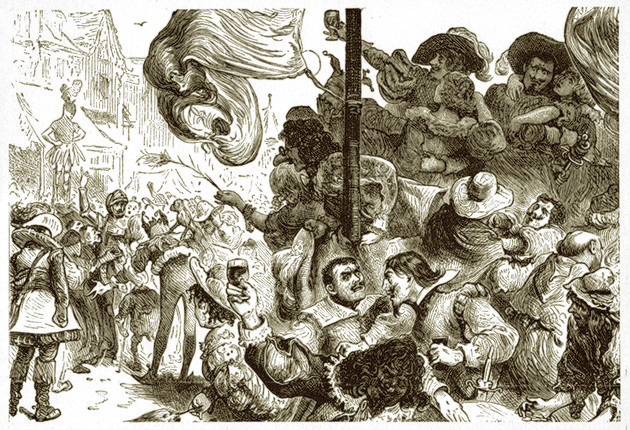- Methodology
- Data collection
- Limitations & Reproducibility
- Results
- Aggregate counts
- Which socials matter?
- Rug‑check alert stack
- Discussion
- 1. Socials ≠ legitimacy, but absence is a screaming red flag
- 2. Rug‑checks as hygiene, not due diligence
- 3. Why so many mints?
- 4. Half‑life and the greater‑fool problem
This note tries to put numbers on a few simple questions:
- How many tokens are minted in a single month?
- What share shows any sign of contact, social site or online community – a website, an email, Telagram, GitHub, X handle, Discord?
- How many survive a first‑pass “rug‑check” (liquidity, ownership dispersion, locked LP)?
The exercise is deliberately narrow – Solana only, one calendar month only – and deliberately modest: I do not tell you which coin to ape into next. Instead, I try to quantify just how lottery‑like the memecoin field has become.

Methodology
Data collection
- Token universe – I pulled every mint event with Dextools API[dextools] between 2025‑02‑01 00:00 UTC and 2025‑02‑29 23:59 UTC (≈ 756 648 unique mint addresses).
- Social footprint – For each address I queried
/socialInfo. A token counts as having socials if any of the 16 supported fields (website, email, X/Twitter, Telegram, GitHub, …) is non‑empty. - Rug‑check – I fed the mint address to rugcheck.xyz[rugcheck] and labelled the coin “passes” when no alert of level
warnordangerwas returned.
Limitations & Reproducibility
- No attempt was made to evaluate utility, road‑map, or fair launch claims – the scope is purely red‑flag hygiene. I haven’t evaluated more sophisticated schemes such as bundling.
- A single month of February‑2025 is analyzed to decrease API costs. It is not necessarily representative.
- The analysis ignores copy‑minting on other chains (Blast, Base).
- Rug‑check’s heuristics update over time; re‑running the script next year will shift numbers.
- The full python scripts and query notebooks (Python, Jupyter) and raw JSON and CSV files live in a GitHub repo I can share upon request[bitquery] .
Results
Aggregate counts
| Metric | Tokens | Share |
|---|---|---|
| Total coins | 756 648 | 100 % |
| With ≥ 1 social link | 742 | 0.10 % |
| Pass all rug‑check tests | 91 | 0.012 % |
Put differently, only one in ~10 000 freshly minted Solana tokens both tells you who they are and shows no obvious technical red flags.
Which socials matter?
| Platform | Count | Percentage |
|---|---|---|
| x/twitter | 685 | 92.3% |
| telegram | 678 | 91.4% |
| website | 547 | 73.7% |
| 198 | 26.7% | |
| 23 | 3.1% | |
| 18 | 2.4% | |
| tiktok | 17 | 2.3% |
| github | 15 | 2.0% |
| discord | 12 | 1.6% |
| youtube | 7 | 0.9% |
| 5 | 0.7% | |
| medium | 3 | 0.4% |
Rug‑check alert stack
| Alert | Count | Percentage |
|---|---|---|
| Low amount of LP Providers | 572 | 29.5% |
| Low Liquidity | 349 | 18.0% |
| Single holder ownership | 238 | 12.3% |
| Top 10 holders high ownership | 179 | 9.2% |
| High ownership | 159 | 8.2% |
| Mutable metadata | 145 | 7.5% |
| Large Amount of LP Unlocked | 121 | 6.2% |
| Creator history of rugged tokens | 89 | 4.6% |
| High holder concentration | 24 | 1.2% |
| Fee config enabled | 16 | 0.8% |
| High holder correlation | 15 | 0.8% |
| Copycat token | 13 | 0.7% |
| Symbol Mismatch | 5 | 0.3% |
| Name Mismatch | 4 | 0.2% |
| Mint Authority still enabled | 4 | 0.2% |
| Low Amount of holders | 3 | 0.2% |
| Freeze Authority still enabled | 1 | 0.1% |
Discussion
1. Socials ≠ legitimacy, but absence is a screaming red flag
A Telegram channel costs nothing; a GitHub repo can be copied in seconds. Yet 99.9 % of tokens don’t bother. That aligns with anecdotal trading heuristics – “If it has no X handle, skip”[redditStrategy] – shared by veteran Solana snipers.
2. Rug‑checks as hygiene, not due diligence
Tools such as Rugcheck, Sniperoo or DEXTools’ “honey‑pot” detector[dextoolsGlossary] catch the low‑hanging scams – unlocked LP, mint authority, fee‑on‑transfer.
They do not protect against:
- Bundlers / soft rugs – devs sell liquidity gradually after building trust[merkle] .
- VC unlock cliffs disguised as “community airdrops”[chainplay] .
- Social engineering via celebrity hacks (the $PSYOP saga on X)[nypost] .
3. Why so many mints?
The zero‑to‑token cost on pump.fun fell from 6 SOL to 0.1 SOL in January 2025[pumpfun] , pushing the daily mint count above 280 k at peak. When the marginal cost of creation is ~$10 and upside is a BONK‑like 1000×, spam is rational[fortune] .
4. Half‑life and the greater‑fool problem
If a coin’s viable window is measured in hours, timing eclipses fundamentals. Trading becomes a reflex game – hence the proliferation of sniper bots, bundle sniffers and real‑time Rugcheck APIs.